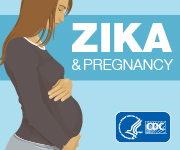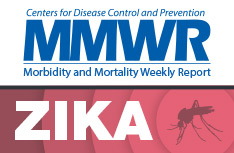Advice for people living in or traveling to South Florida
CDC previously issued guidance related to Zika for people living in or traveling to Miami-Dade County, Florida, which advised that pregnant women not travel to this area due to local transmission of Zika virus. CDC designates areas for Zika virus transmission prevention in the continental United States and Hawaii as red or yellow. Miami-Dade County was previously designated as a Zika cautionary (yellow) area, but that designation was removed on June 2, 2017. This means that there are no longer any travel recommendations related to Zika virus for Miami-Dade County, Florida. Although the level of risk of Zika virus transmission after a yellow area is removed is not known, it is likely to be low. However, sporadic cases may still occur. For this reason, CDC recommends that people living in or traveling to Miami-Dade County continue to protect themselves from mosquito-borne illnesses, including Zika virus, by following the guidance below. See CDC’s travel, testing, and pregnancy planning guidance for areas with reported mosquito-borne spread of Zika virus.
Hurricanes and mosquitoes
- Learn more about mosquitoes and hurricanes.
Travel
- Because Miami-Dade County is no longer a yellow area, there are no recommendations to avoid travel to this area.
Prevention
- Women and men who live in or travel to Miami-Dade County should remain aware of any new reports of Zika virus transmission in their area and should follow steps to prevent mosquito bites to reduce their risk for illnesses spread by mosquitoes, including Zika virus.
- Because Zika virus can persist for months in semen, there may still be a continuing risk for sexual transmission, whether or not the partner had symptoms of Zika. Pregnant women and their partners who live in or travel to Miami-Dade County who want to reduce their risk of Zika virus infection should use condoms every time they have sex (including vaginal, anal, and oral sex), or they should not have sex during the pregnancy.
- Women who are not pregnant and men who live in or travel to these areas who want to reduce their risk of Zika virus infection should consider using condoms every time they have sex, or not having sex. Men should consider condom use for at least 6 months, and women should consider having sex with a condom for at least 8 weeks from June 2, 2017.
Testing and Diagnosis
- Anyone who lived in, traveled to, or had sex without a condom with someone who lived in or traveled to Miami-Dade County between August 1, 2016, and June 2, 2017, who has signs and symptoms consistent with Zika virus disease should be tested.
- CDC recommendations for pregnant women can be found in the updated MMWR report.
- The state of Florida may take into account the epidemiology of Zika virus transmission and other epidemiologic considerations (e.g., seasonality and mosquito surveillance and control factors) and, therefore, might include a routine recommendation to test asymptomatic pregnant women either for clinical care or as part of Zika virus infection surveillance. Healthcare providers should contact their state health department for state specific guidance.
Pregnancy Planning
- People living in Miami-Dade County should talk to their healthcare provider about pregnancy plans. Although the level of Zika virus transmission is likely to be low, sporadic cases may still occur. In addition, couples should consider the possible resurgence of active transmission of Zika virus during the next mosquito season in their pregnancy planning.
- Men who traveled to Miami-Dade County between August 1, 2016, and June 2, 2017 should consider waiting at least 6 months after their last possible exposure to this area before attempting to conceive with their partner.
- Women who traveled to Miami-Dade County between August 1, 2016, and June 2, 2017 should consider waiting at least 8 weeks after their last possible exposure to this area before attempting to conceive with their partner.
- If both male and female partners of a couple traveled together to Miami-Dade County between August 1, 2016, and June 2, 2017, they should consider waiting at least 6 months after their last possible exposure to this area before attempting to conceive.
- Limited data are available about the persistence of Zika in body fluids and the chances of harm to a pregnancy when the woman is infected with Zika around the time of conception. Some couples with a partner with possible Zika virus exposure may choose to wait longer or shorter than the recommended period to try to get pregnant. For more information, see CDC’s travel, testing, and pregnancy planning guidance for areas with reported mosquito-borne spread of Zika virus.
Previous Zika active transmission areas (Red areas) and Zika cautionary areas (Yellow areas)
Because the yellow area designation was removed on June 2, 2017, the guidance shown above now applies to all of Miami-Dade County that had previously been designated as red or yellow areas. Women and men living in or who traveled to these areas should be aware that these locations were considered to have Zika virus spread previously. Although the level of risk of Zika virus transmission after a yellow area designation is removed is unknown, it is likely to be low. This information reflects the current situation in Miami-Dade County, Florida. CDC will provide updates if the situation changes.
Timeline
On June 2, 2017, CDC removed the yellow area designation for Miami-Dade County. The yellow area designation was lifted because criteria identified in CDC’s Zika Interim Response Plan had been met: more than three mosquito incubation periods (45 days) passed with no additional confirmed local transmission cases and no suspected local transmission cases under investigation with enhanced surveillance in place.
On December 9, 2016, CDC removed the red area designation for the remaining 1.5-square-mile area of South Miami Beach after three mosquito incubation periods (45 days) passed without any new locally transmitted cases of Zika. Guidance for yellow areas now applies to the South Miami Beach area and all of Miami-Dade County.
On December 2, 2016, CDC removed the red area designation for the 1-square-mile area of Little River after more than three mosquito incubation periods (45 days) passed without any new locally transmitted cases of Zika. Guidance for yellow areas now applies to the Little River area.
On November 21, 2016, CDC updated guidance for the 4.5-square-mile area of Miami Beach. The North and South Miami Beach sections are being considered separately again because no new cases of local Zika virus transmission were identified in the North Miami Beach area after three mosquito incubation periods passed (45 days), suggesting that the risk of Zika virus infection in North Miami Beach is no longer greater than in the rest of Miami-Dade County. The original 1.5-square-mile area of South Miami Beach for which guidance was issued on September 17 will remain a red area until 45 days pass without new cases. The remainder of Miami-Dade County is designated as a Zika cautionary area (yellow area). Guidance for yellow areas now applies to North Miami Beach.
On October 19, because local spread of Zika virus continued to be reported in Miami-Dade County, CDC updated its travel and testing guidance to apply recommendations to all of Miami-Dade County.
On October 13, Florida announced a new area of mosquito-borne spread of Zika in an additional 1-square-mile area of Little River in Miami-Dade County, FL.
On September 19, CDC updated guidance for the Wynwood-designated area after three mosquito incubation periods passed without any new locally transmitted cases of Zika.
On August 19, CDC also issued guidance for a 1.5-square-mile section of South Miami Beach identified to have mosquito-borne spread of Zika; on September 17, this section was expanded to a 4.5-square-mile area that included areas of North Miami Beach.
On August 1, 2016, CDC issued guidance for people living in or traveling to a 1-square-mile area of the Wynwood neighborhood in Miami, FL, identified by the Florida Department of Health as having mosquito-borne spread of Zika.
For questions on mosquito control in Florida
Florida health officials can answer specific questions on Florida’s mosquito control program. Aerial treatment of areas with products that rapidly reduce the populations of mosquitoes can help to limit the number of mosquitoes that carry the Zika virus. Repeated aerial applications of insecticide has reduced mosquito populations as a part of an integrated mosquito management program.
- Page last reviewed: October 10, 2017
- Page last updated: October 10, 2017
- Content source:





 ShareCompartir
ShareCompartir
